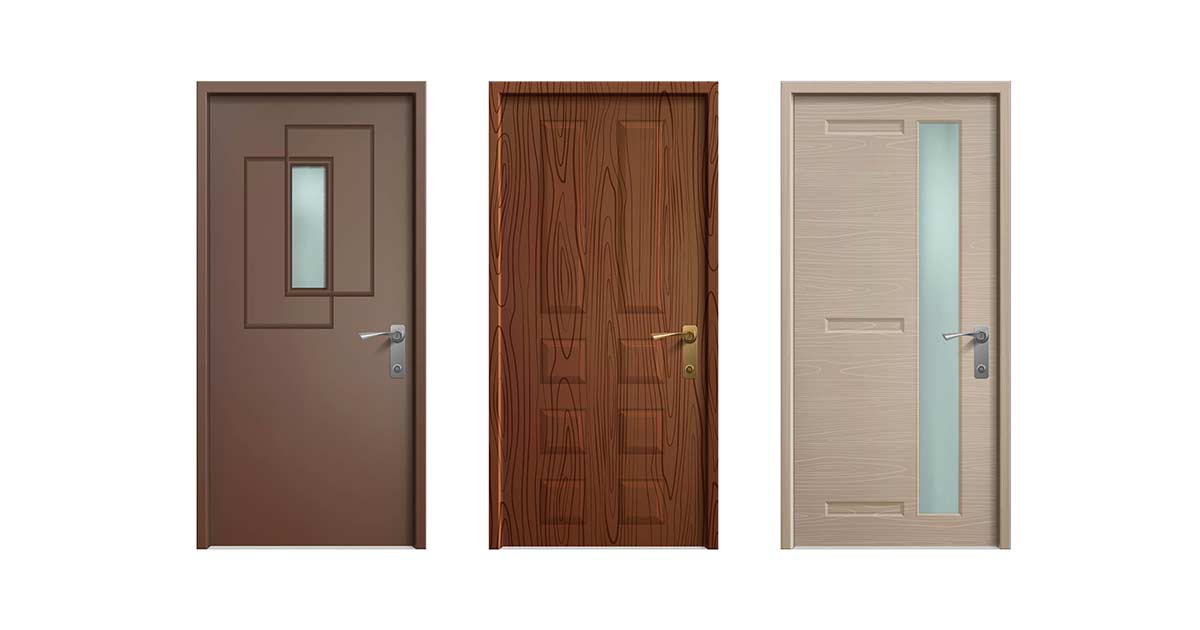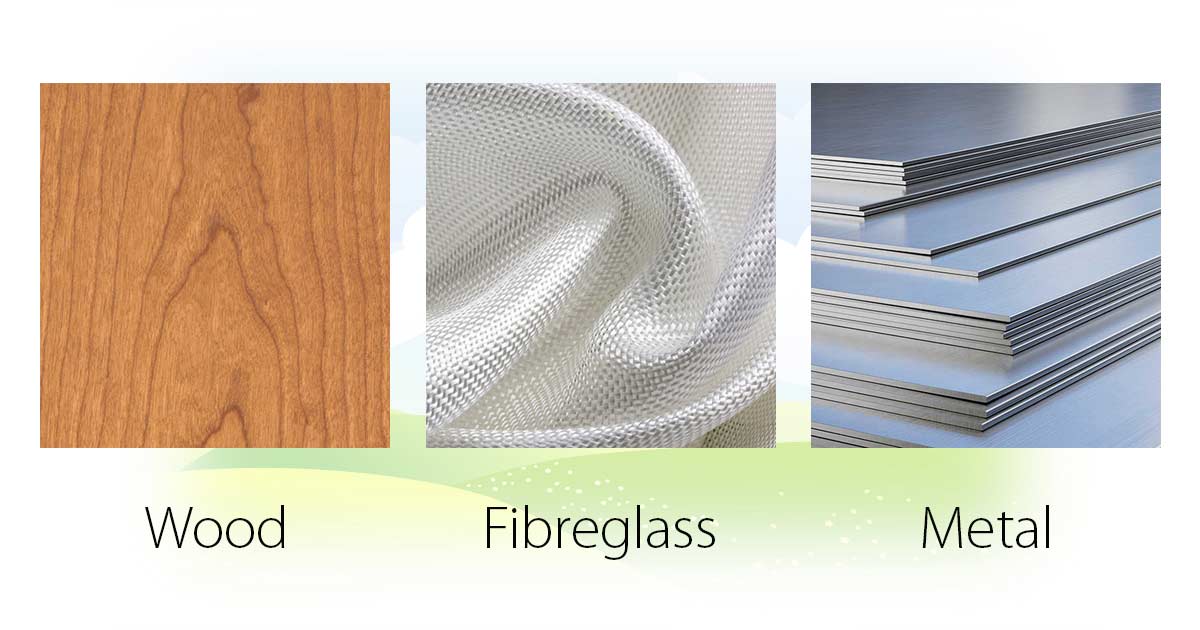Insights > Article > Posted: 2025-Mar-20, Updated: 2025-Feb-26
Storm Doors: Benefits and Limitations
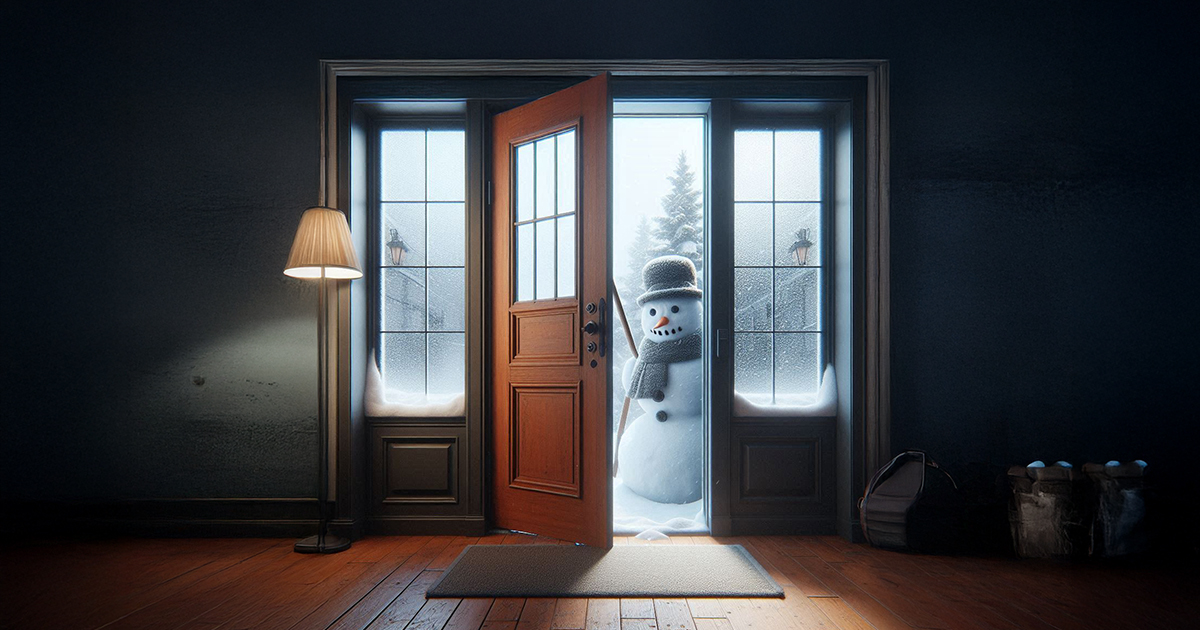
In this article:
What is a storm door?
A storm door is a secondary door that sits in front of your main door, giving your entryway extra protection from wind, rain, and snow. Many models feature glass panels and screens that can be swapped out or adjusted for ventilation, while others have built-in designs that slide or roll into place. A storm door may block wind and snow, but it offers little in the way of real insulation.
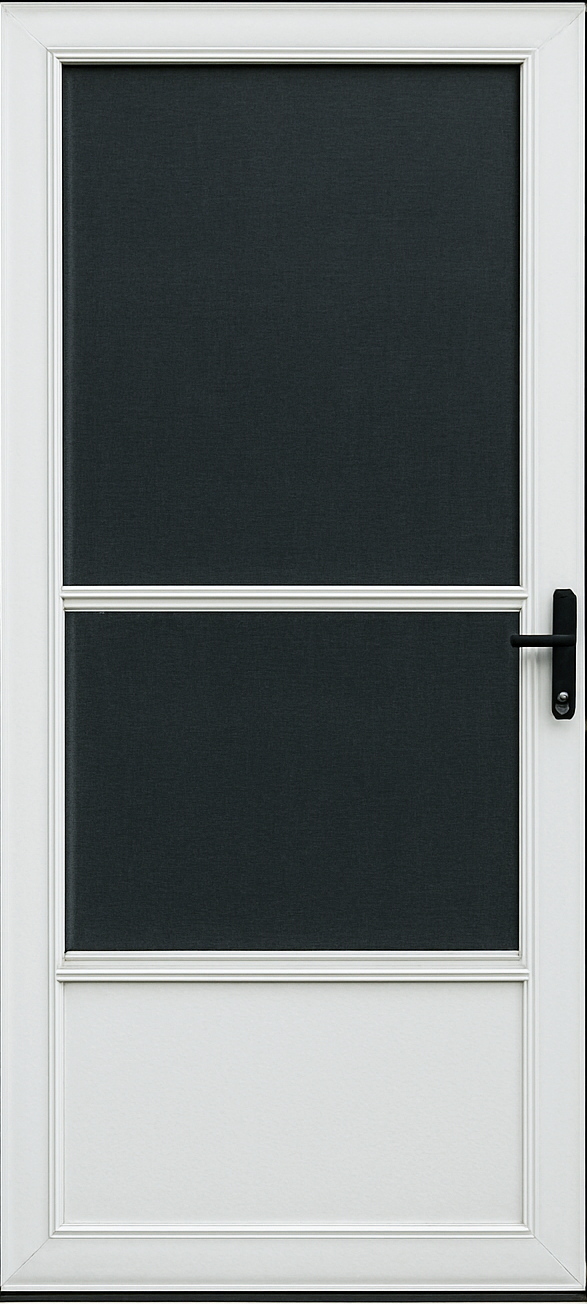
A storm door can be useful for adding ventilation in warm weather, letting in fresh air while keeping pets safely indoors. However, if pets or open-door airflow aren’t a concern, a storm door usually isn’t necessary. Modern entry doors are already built for energy efficiency, comfort, and security, making them a better long-term choice on their own.
The limits of storm doors for energy efficiency
Even though a front door is a small part of your home, it can have a big impact on energy use. In a typical 2,400 sq. ft. house, the main entrance alone can account for 6–8% of total heat loss in the winter — and it can also let valuable cool, conditioned air escape during the summer.
If energy efficiency is a concern, replacing an older door with one that has an insulated core, high-quality weatherstripping, and Low-E glass can make a noticeable difference. These features help maintain consistent indoor temperatures, reduce drafts, and lower heating and cooling costs year-round.
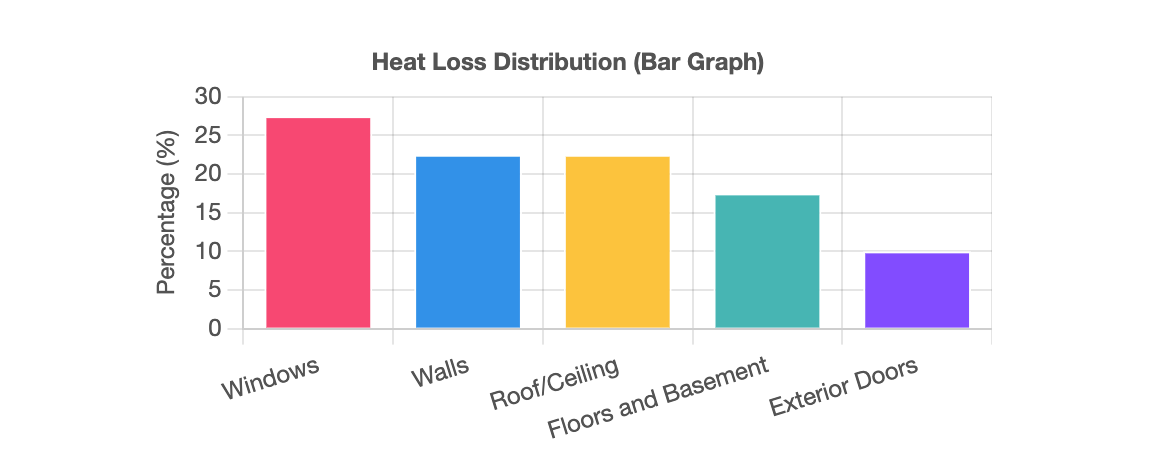
Storm doors: short-term benefits and limitations
If replacing your entry door isn’t an option yet, a storm door can offer extra insulation and protection, but it comes with trade-offs.
Pros
- Extra Insulation: Creates an air buffer to reduce heat loss and improve comfort.
- Minor Energy Savings: Low-E glass and weatherstripping can help, though less than a new door.
- Weather Protection: Shields your main door from snow, ice, rain, and wind.
- Ventilation: Screen panels allow fresh air while keeping insects out.
- Added Security: Some models include reinforced frames and locks.
Cons
- Temporary Solution: Doesn’t fix poor insulation, warping, or ageing materials.
- Cost: Quality storm doors can be pricey and don’t increase home value.
- Limited Energy Benefits: Modern entry doors outperform storm doors in insulation.
- Aesthetic & Maintenance: May clash with your home’s style and require regular upkeep.
- Limited Impact: Homes with already energy-efficient doors gain little benefit.
- Installation & Moisture Issues: Installers may be hard to find, and trapped moisture can cause damage to wood doors.
When a storm door makes sense
The answer depends on your specific needs and circumstances. If your primary door is older or poorly insulated, a storm door can provide the benefits of energy efficiency, protection, and comfort. However, if your main door is already high-quality and energy-efficient, the added value of a storm door may be limited.
For Ottawa homeowners looking to enhance their home’s durability and energy performance, a storm door could be a practical addition—especially when installed correctly.
Tips for choosing the right storm door
While storm doors can offer extra insulation, protection, and ventilation, they are generally a short-term solution and don’t replace the benefits of a modern, energy-efficient entry door. If you’re not ready to replace your main door but still want the added features a storm door can provide, here are some helpful tips to choose the right one for your home.
Consider your area climate:
Choose a storm door with insulated glass and durable weatherstripping to help reduce heat loss.
Match your primary door:
For wood doors, select a storm door with a ventilated design or a protective coating to prevent moisture buildup and warping. For steel or fibreglass doors, opt for a storm door with a sturdy aluminium or composite frame that complements the durability of your entry door.
Prioritise energy efficiency:
Look for Energy Star-certified storm doors or models with Low-E glass to improve insulation and reduce drafts.
Choose the right style:
Storm doors come in various designs, including full-view, mid-view, and retractable screens. Select one that matches your home’s aesthetic while meeting your functional needs.
Invest in quality:
Not all storm doors are equal. Choosing a high-quality model from a reputable manufacturer ensures longevity, smooth operation, and better resistance to Ottawa’s snowy, salty winters.
Why a modern entry door often performs better
Modern entrance doors have advanced far beyond older models, making storm doors largely unnecessary. Today’s high-performance entry doors offer superior insulation, security, and long-term cost savings. Key reasons to replace your entry door instead of adding a storm door:
Superior Insulation and Energy Efficiency
New entry doors feature high-density insulated cores, advanced weatherstripping, and Low-E glass inserts to minimise drafts and improve overall comfort. Doors with R-values of 5 to 7+ significantly outperform storm doors, which only offer minor insulation benefits. Energy Star-rated doors can also reduce heating and cooling costs year-round, making them a smart long-term investment.
Increased Home Value and Curb Appeal
A new, well-designed entry door enhances curb appeal and creates a strong first impression. Replacing an entry door can recoup up to 70 to 90 percent of the cost when selling a home. While storm doors do not add resale value, a modern entry door improves both the home’s aesthetic and its perceived quality.
Better Security
Modern entry doors offer multi-point locking systems, reinforced steel or fibreglass frames, and impact-resistant materials. Storm doors provide only minor additional security, whereas a strong primary door serves as a much better deterrent against break-ins.
Long-Term Cost Savings
Storm doors are a short-term solution, while a new, energy-efficient entry door permanently reduces heating and cooling costs. Many modern doors pay for themselves over time through lower energy bills.
No Moisture or Ventilation Issues
Unlike storm doors, modern entry doors are designed to prevent condensation, reducing the risk of wood rot, warping, and frame damage. Many high-end doors also come with built-in ventilation options, such as operable sidelights or glass inserts, which allow fresh air without the drawbacks of a storm door.
Related articles
Summary
If you're considering a storm door because your current entry door is outdated, it may be more worthwhile to explore modern replacement options instead.
Looking for expert advice? Contact Bayview Windows today to explore our selection of high-quality, energy-efficient entry doors designed for Ottawa’s climate.
Considerations
Window into a Door
